My first class on Monday was Rendering. It's described as "an intensive study of graphic visualization for convincing representation. An introduction to light logic and the application of a variety of black and white and color media to produce highly refined and visually accurate drawings and paintings. Emphasis is on a realistic fidelity in the representation of nature and man-made objects through the careful study of structure, surface, and lighting influences."
I was very intimidated with this class because it was supposed to be done after your foundation Illustration class, which I was taking at the same time. I found out that there were some mediums that I enjoyed, and some I completely hated and preferably will never use again.







My next class on Monday was Foundation Maya. "This course introduces the student to the complex interface of Maya, one of the leading software programs in the animation and graphic design industries. Students will learn how to navigate Maya's interface exploring basic modeling, rigging, lighting, texture, and camera set-up. This course is required for every student majoring in visual communication."
It was a pretty interesting class.
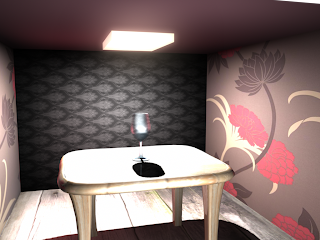
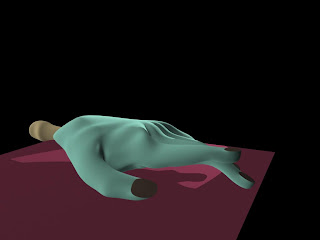 Tuesday I had Comp. and Color Foundation. "This course analyzes basic compositional structures and presentation approaches from master paintings. Students will investigate how artists use color to achieve order, balance, and unity. Students will also learn practical application of formal pictorial elements, such as line, value, hue, temperature, edge relationship, emphasis, and eye path to create visual equilibrium. Materials include graphite, charcoal, and oil paint. "
Tuesday I had Comp. and Color Foundation. "This course analyzes basic compositional structures and presentation approaches from master paintings. Students will investigate how artists use color to achieve order, balance, and unity. Students will also learn practical application of formal pictorial elements, such as line, value, hue, temperature, edge relationship, emphasis, and eye path to create visual equilibrium. Materials include graphite, charcoal, and oil paint. "I'm not really a fan of painting, especially oils. It takes forever to set up, clean up, and mix. It's also toxic. The class was interesting nonetheless.






On Tuesday nights I had my favorite class, which was Animation. "This introductory course covers fundamental principles of drawing animated action and movement. Students explore basic animation drawing, rudimentary movement, timing, and consistency in drawing volume and mass, as well as primary and secondary action. In prepared exercises students will learn some animation basics such as the overlap or bouncing ball and how to plan and complete an animated film. Additional topics include the importance of acting, a brief history of animation, animation styles, and an overview of the animation industry."
I wish I had more time to work on the projects. They were still a lot of fun.
On Wednesday, I had Rendering again, and then I had Perspective. "This is an introduction to linear perspective systems. Students explore a variety of basic and complex laws to convey the illusion of three-dimensional forms in space on a two-dimensional surface. The course stresses volume, scale, placement, and direction of forms in a spatial field."
I hated using rulers all the time, but the class made me appreciate and like backgrounds a lot more.



After Perspective, I had Critical Reasoning. It was my only Liberal Arts class. I highly doubt anyone would want to read my essays, so I'm going to move on to my Thursday classes.
In the morning I had Foundation Figure and Portrait Sculpture. "This is an introduction to sculpture processes and figure modeling through problem solving. The student is introduced to techniques of visual research, idea development, evaluation, attention to craft, skill development, material application, and the relationship of appropriate materials to the idea."
I had a TREMENDOUSLY difficult time in this class as I haven't sculpted before. The teacher didn't really teach either, until I talked to him a few times. He eventually knew what kind of instructions I needed, and tried to help me.
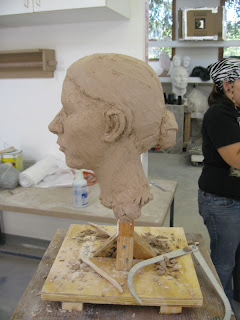
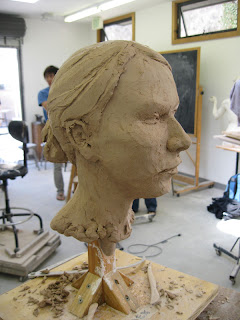
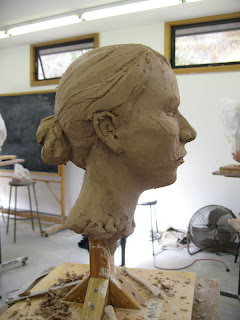

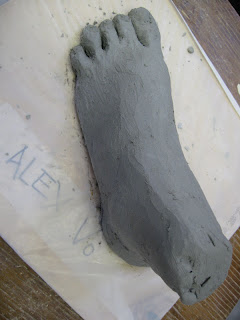
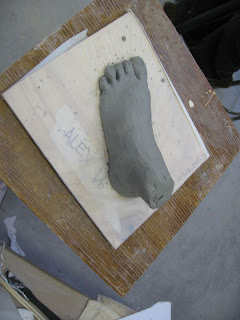
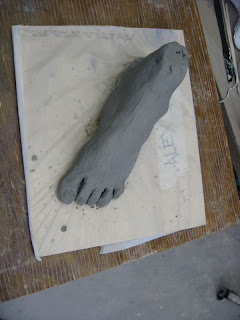
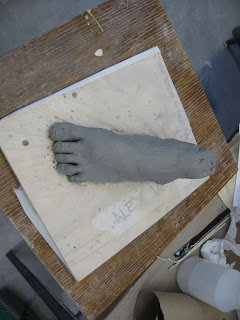








And finally, my last class of the week! The class was Foundation Illustration. "In this course students are introduced to the role of the illustrator and how the illustrator works. Through directed class assignments, students are exposed to fundamental principles and practices of illustration. Methods, processes, and techniques of visually communicating ideas are explored. Students learn how to acquire and properly use reference material, develop the sketch, visually express imagery, and formulate a finished illustration."
I felt really bad that it was my last class, because I liked the class a lot, but would put the homework aside until last, since it was the last class. I wish I had more time to spend on them.





And that's it! I'm Spring semester is going to start soon, and I'm refreshed and ready for the next challenge!
Take care, and I hope you enjoyed viewing my work.
Until then,
Alex
Yowza, Alex! Even your Foundation work smacks of ambition. Beautiful blog, too. Excuse me while I scramble madly to improve my skills...
ReplyDeleteOh wow Mike! Thanks a bunch for the very flattering comment. The blog was mostly done by shabbyblogs.com so it's not me. :P And psh, I think your animation work is great and I'm the one that needs to scramble. :P
ReplyDelete